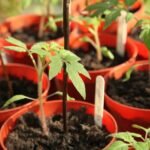We use cookies to make your experience better. To comply with the new e-Privacy directive, we need to ask for your consent to set the cookies. Learn more.
Tomato Tips
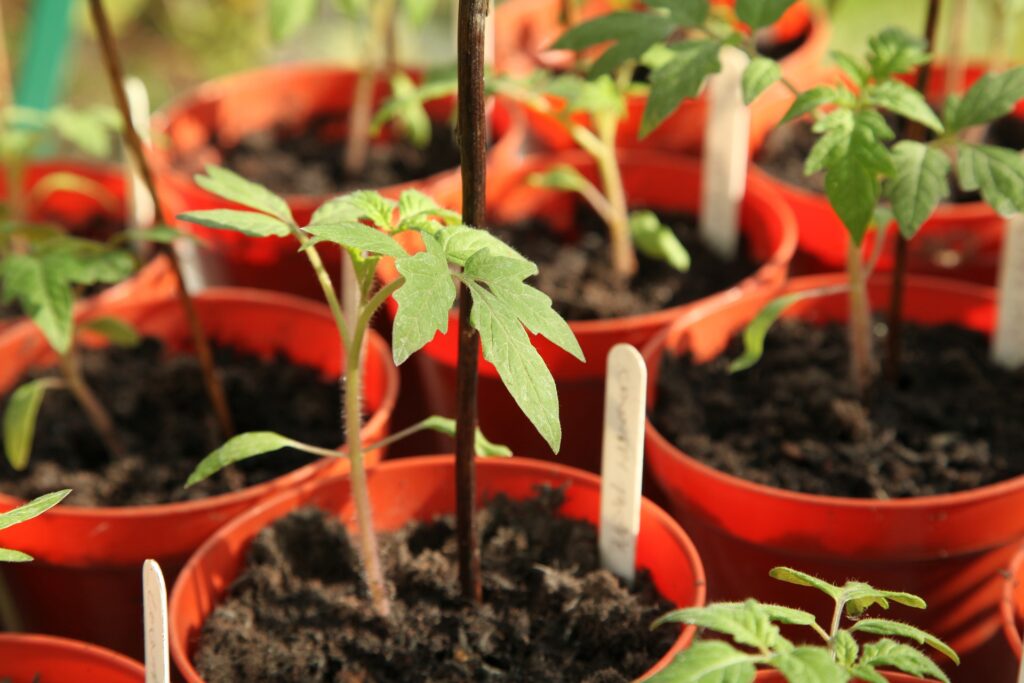
Updated: 4th March 2024
Tomato Tips
Tomatoes are a fun and relatively easy crop to grow. The flavour of homegrown fresh tomatoes is hard to beat so growing your own crop is a no brainer! Whether you're a seasoned gardener or just starting out, mastering the art of growing tomatoes can be incredibly rewarding. To help you achieve success, here are some essential tips covering everything from sowing to troubleshooting common problems.
Sowing
Sow tomatoes indoors from late February to early April. Tomato seeds germinate best at a temperature of 20-24°C. Using a propagator or heat mat is very useful here. At lower temperatures germination will take a little longer. Try to keep temperatures from fluctuating too much during the early stages of growth. Tomato seeds can be sown 3-6mm deep in seed trays, modular trays or mini blocks. They should be pricked out and transplanted into larger 9cm pots after a few of the 'true leaves' have formed. Seeds should be sown in seed compost and potted on into potting compost.
Light
Seeds grown in a warm place will race ahead – but if your light levels are low they will become weak and leggy. To stop this happening you should reduce the heat to about 10°C and put your seedlings in the brightest place possible. The best tomato seedlings are short and stubby rather than tall and thin. If your tomatoes are a bit leggy you can still use them by planting quite deep - right up to the lower sets of leaves. Tomato stems have the ability to grow roots from buried stems and will build a more extensive root.
If you have a lot of early seedlings and plants you could consider investing in a grow light.
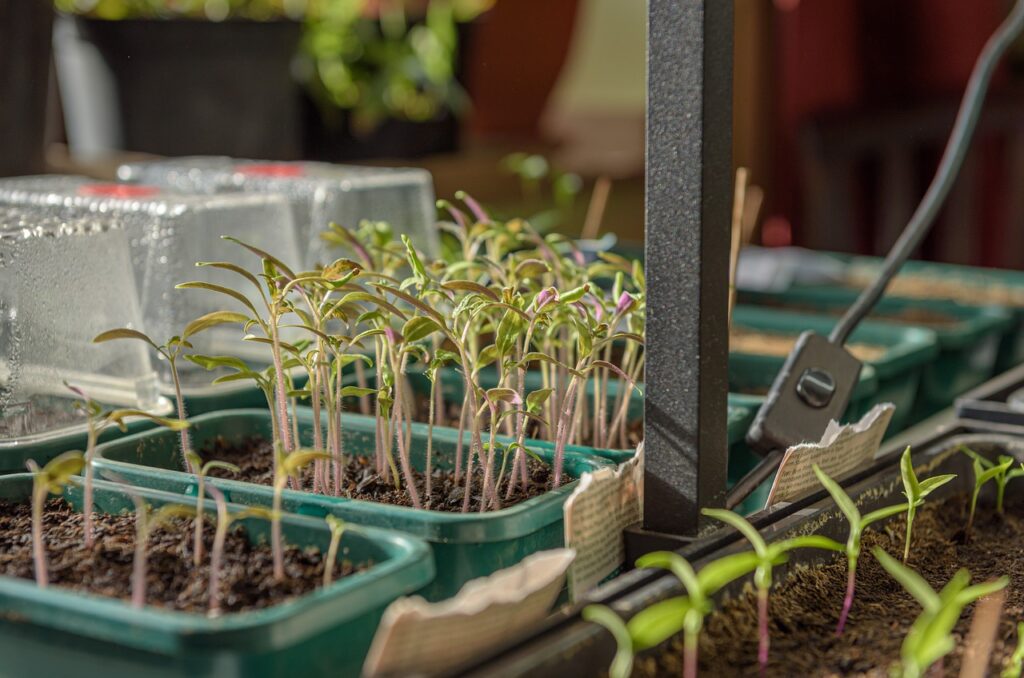
Transplanting
Tomatoes should be transplanted into their final positions when they are about 15cm high. Don't leave it too late or the roots will become pot bound. Transplanting usuually occurs in late April or May.
Tomato plants require very fertile soil, incorporate well rotted farmyard manure or a quality NPK fertiliser into prepared soil. Seaweed dust can also be added to soil - the plant hormones in seaweed are very beneficial to tomatoes.
Dig holes 5cm deeper than the pot, space plants about 40-60cm apart with 75cm between rows. Planting tomato plants deeper in the soil than in their pots will encourage the formation of additional roots. Water well.
Supporting
Tomatoes need support – either canes or strong twine. The twine must be strong to take the considerable weight of your crop. This can be done by burying a length of twine under the root and tying the other end to the crop bars in your tunnel. Tomato clips can be used to secure plant to the support. They are easy to use and will gently support the plants and also eliminate the need to twist the twine around the stem.
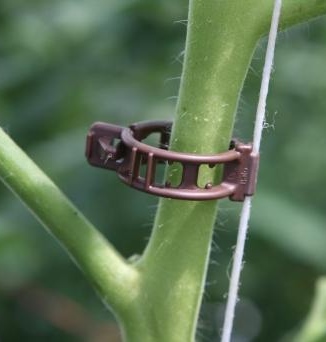
Feeding
Once the fruit has set, feed weekly with a liquid tomato feed (Vinasse, OPF) and/or liquid seaweed.
You can also make your own liquid fertiliser from comfrey or nettles, which are rich in potash and nitrogen. To make the liquid fertiliser you will need a quantity of nettle/comfrey leaves and a large barrel or bucket. Break up the leaves a bit and jam as many as possible into the container. Weigh them down with a piece of wood and cover with water. Cover with a lid of some sort to keep out rain and flies. After about six weeks in isolation you will have a rich dark brown liquid (it smells a bit) that can be diluted as a feed for your tomatoes or potatoes. The residual sludge can be put on the compost heap. For a stronger less smelly feed don't put water into the barrel. Collect the brown liquid as it drips from the decomposing leaves. A barrel with a tap is good for this method.
Sideshooting
Tomatoes produce side shoots, these must be nipped out so that all the plant's energy goes into growing fruit. The side shoot will appear at the point where a leaf branch meets the main stem.
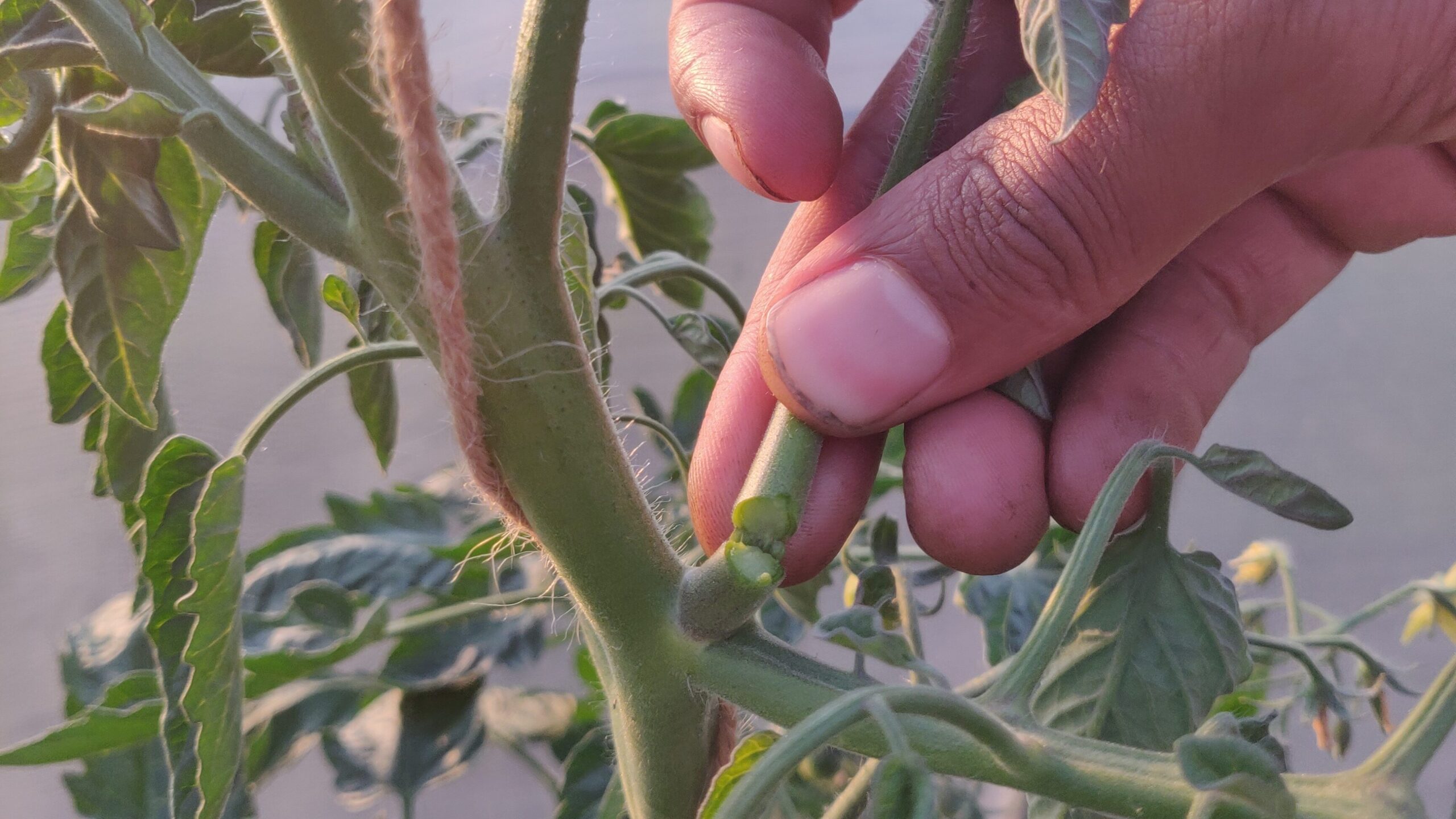
Stopping
'Stopping' is the practice of removing the main growing shoot to focus the plants energy on growing and ripening existing fruit. To 'stop' plants cut off the top of the main stem - continue to remove side shoots as normal. This is usually done when the plant has between 4-6 fruit trusses.
Watering
Watering should be as consistent as possible. Always water tomato seedlings from below, taking care not to over water or allow your tomato seedlings to dry out.
Water well when planting out and then lightly until the fruit starts to set. Once fruit is setting water well on a weekly basis. Setting up a drip irrigation system would be beneficial.
Harvesting
Pick as soon as the fruits are ripe for the best flavour. Gently twist or cut the fruit from the vine, taking care not to damage the plant or nearby foliage. Make sure to finish picking all the fruit before first frost, allow these to ripen on a window sill.
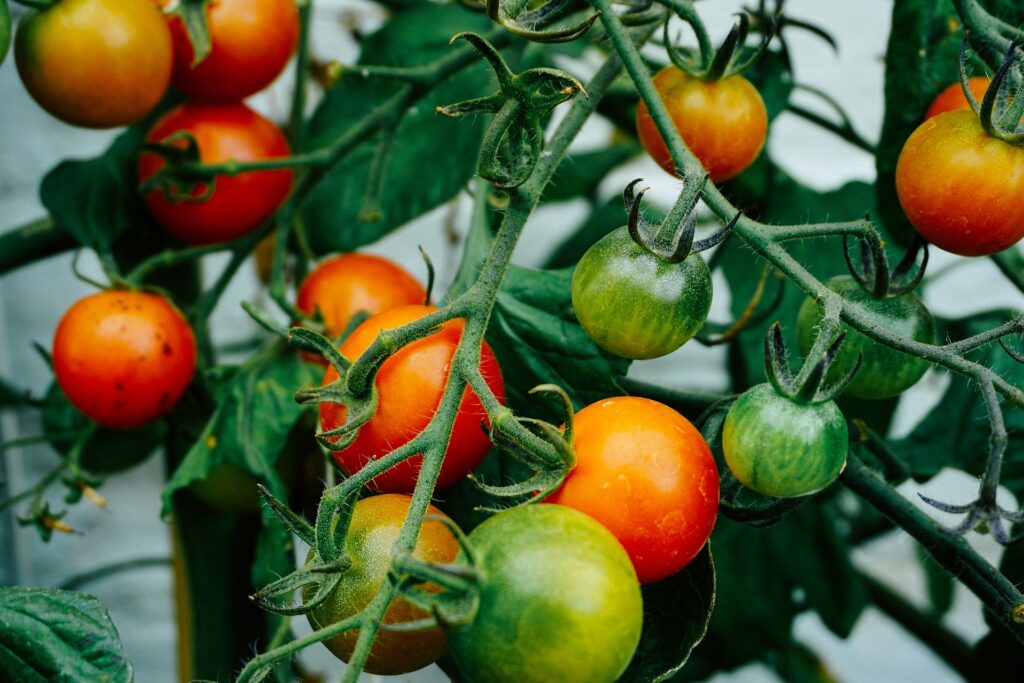
Tomato Problems
- Fruit Splitting - Caused by irregular watering. A regular watering regime with an irrigation system and timer will solve this and save time.
- Calcium Deficiency & Blossom End Rot - Blossom end rot is a dark/rotting area around the base of tomato fruit, caused by a shortage of calcium. You can apply Gypsum or Liquid Calcium feed. The problem can also be caused under watering as calcium uptake is slowed in drought conditions. Again, a more regular watering regime should solve this problem.
- Whitefly & Aphids - the most likely pests to affect your tomatoes. As soon as you see eggs, spray with water to wash them off and remove others by hand. For bad infestations use Diatomaceous earth, Soft soap or Pyrethrum. Yellow stick traps can be used to trap and monitor aphids. Herfosec plant strengthener or AMN Biovit can be used to strenthen the plants and also discourage biting insects.
- Tomato Blight - Caused by the fungus Phytophthora infestans. This can be a problem in a polytunnel if it is not properly ventilated, wet foliage can allow infection. Make sure that plants are well spaced out allowing for airflow. Do not use overhead irrigation for tomatoes. Herfomyc strengthener can also be used as a preventative.
Browse our selection of Organic, open pollinated tomato varieties here.

